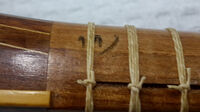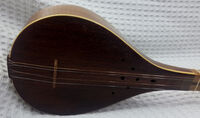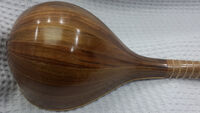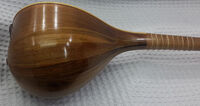Setar
Setar r is one of the Iranian plectrum-type string instruments, which is plucked by the player's forefinger's nail. Sehtar or Setouyeh is a three-cord instrument, which was converted into a four-cord instrument under the reign of the Qajars. It is, in general, an ancient and gnostic instrument usually played at the gathering of dervishes most often held at Khaneqahs (monasteries or houses of dervishes), which makes the listener feel high. In view of its special vocal features, Sehtar is known as the instrument appealing to the listener's heart and the Iranian musical instrument ranking second among Iranian musicians. It is simpler than other instruments both in appearance and the method of playing. Its low tune, compactness and tenderness are the main reason for its great appeal in the course of the past centuries. It is made in various types and sizes including large, small, flat and zir-abai. Tars are made in two methods: Turkish (in many pieces) and scraped kasdani (in one piece). Sehtar is generally made from berry wood, while at some occasions that of pear or walnut tree might be used as well. Its bowel is a pear-shaped semi-sphere, while its thin and delicate handle is tenderer than that of other instruments. (http://www.orientalinstruments.com/oriental/joomla/index.php?option=com_content&view=article&id=49)
(click to enlarge)
Created: NaN
Last updated: 23-01-2025 [00:04]
For attribution, please cite this page as:
Charters, T., "Setar": https://nexp.pt/setar.html (23-01-2025 [00:04])
(cc-by-sa) Tiago Charters - tiagocharters@nexp.pt











